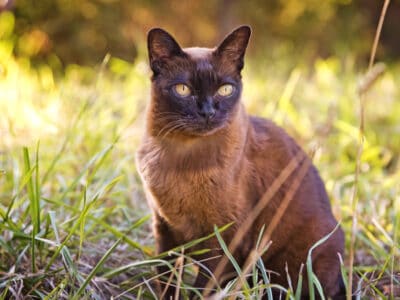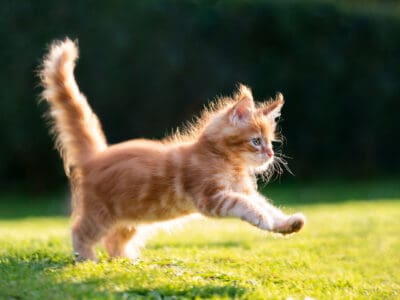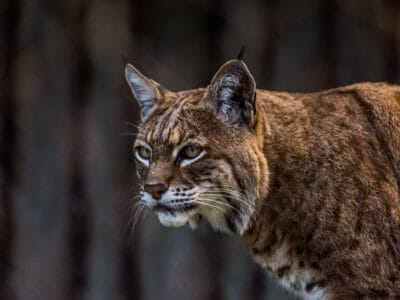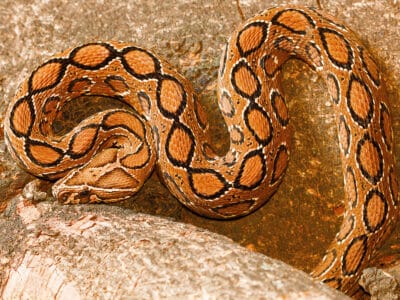Russian Blue
.jumbotron {
background-image: url(“https://a-z-animals.com/media/2019/11/Russian-Blue-header-400×300.jpg”);
}
}
@media only screen and (min-width: 641px) and (max-width: 920px) {
.jumbotron {
background-image: url(“https://a-z-animals.com/media/2019/11/Russian-Blue-header-470×370.jpg”);
}
}
@media only screen and (min-width: 921px) {
.jumbotron {
background-image: url(“https://a-z-animals.com/media/2019/11/Russian-Blue-header.jpg”);
}
}
Russian Blue
Felis catus
The Russian blue cat is also known as the Archangel blue cat, and is thought to have originated from the port of Arkhangelsk in Russia.
Russian Blue Scientific Classification
- Kingdom
- Animalia
- Phylum
- Chordata
- Class
- Mammalia
- Order
- Carnivora
- Family
- Felidae
- Genus
- Felis
- Scientific Name
- Felis catus
Read our Complete Guide to Classification of Animals.
Russian Blue Conservation Status
Russian Blue Facts
- Fun Fact
- The Russian blue cat is also known as the Archangel blue cat, and is thought to have originated from the port of Arkhangelsk in Russia.
- Other Name(s)
- Archangel Cat, Archangel Blue
- Temperament
- Independent, easy-going and loyal
- Diet
- Omnivore
- Average Litter Size
- 6
- Common Name
- Russian Blue
- Slogan
- First brought to the UK in the 1800s!
- Group
- Shorthair
This post may contain affiliate links to our partners like Chewy, Amazon, and others. Purchasing through these helps us further the A-Z Animals mission to educate about the world’s species..

Spiders that fly! Fish that walk! And 1000+ more incredible animals. Discover them all for FREE
.photo-gallery {
–margin: 0px auto 0px;
–padding: 0px 0px 0px 0px;
}
.gallery-link {
background-image: url(“https://a-z-animals.com/media/2019/11/Russian-Blue-in-basket-1024×535.jpg”);
background-repeat: no-repeat;
background-size: cover;
background-position: center;
height: 500px;
justify-content: center;
text-align: center;
align-items: center;
display: flex;
border: 2px solid #000;
}
.gallery-link img {
height: 50%;
}
@media only screen and (max-width: 768px) {
.gallery-link {
height: 300px !important;
}
}
View all of the Russian Blue images!
Like many other breeds, the Russian Blue was brought to England as a curiosity by far-ranging British seamen. From these small beginnings in the 1860s, the breed disseminated all over the western world but never in any large numbers. Despite its many sterling qualities, Russian Blues have one character trait that kept them from becoming more widespread.
They are notoriously reserved towards strangers and disruptions in their normal routine. This made them very poor raw material for the chaotic cat show venues that popularized various types of felines. Being nervous and skittish in such a public space discouraged many breeders from taking to the Russian Blue as a potential breeding or cross-breeding candidate.
See all of our expert product reviews.
They ended up missing a lot since the Russian Blue has many unique qualities in its mix of attributes. The most interesting of these is the eye color. Kittens have yellow eyes. As they reach adolescence, this yellow color becomes constricted by a ring of green, which gradually takes over until the cat’s eyes are fully green at maturity.
button.pulse {
transform: scale(1); animation: pulse 2s infinite;
box-shadow: 0 0 0 0 rgba(11, 247, 25, 1);
}
@keyframes pulse {
0% { transform: scale(0.90); box-shadow: 0 0 0 0 rgba(11, 247, 25, 0.5); }
60% { transform: scale(1); box-shadow: 0 0 0 15px rgba(11, 247, 25, 0); }
100% { transform: scale(0.90); box-shadow: 0 0 0 0 rgba(11, 247, 25, 0); }
}
As with other British-centric cat breeds, the Russian Blue was badly depleted by World War II and only recovered very slowly thereafter. Breeders at first crossed it with some of its Siamese and European cousins, then later worked hard to breed these same introduced characteristics back out so that the breed could revert closer to its original mix of specifications. The result is that modern Russian Blues are not entirely pure with regards to their progenitors from the White Sea in far northern Russia but very close.
Russian Blue Traits: What To Know Before You Buy
Russian Blue cats are homebodies. They are not at all fond of new experiences and people. It is common for them to hide when strangers come to call, allegedly as a survival reflex from the distant ages when they were hunted for their luxuriously thick fur coat.
They are also very fastidious and do not like anything except the most pristine cat box to do their business in. They are also well known for being friendly to their family group but having definite preferences towards an individual to whom they show special favor.
Russian Blue Personality
A very intelligent member of the feline family, Russian Blues love to play fetch and are both inquisitive and dexterous enough to get into things. This is balanced, however, by their ability to grasp that they are not wanted on some surfaces, and they will refrain from violating those boundaries once they understand what they are.
Health and Entertainment for your Russian Blue
See all of our expert product reviews.
They are excellent cats when it comes to being left home alone, where they will simply sack out. They will quietly wait for everyone to come home rather than tearing things up out of sheer boredom or manic worry over being abandoned.
Boundaries are a two-way street to a Russian Blue. They will not do things you do not want them to do, but the things you do for them are expected to be done in a timely and routine manner. If dinner is late, they will let you hear about it. They love to talk and will communicate their needs and desires to you.
Russian Blues are also noted for the permanent smile inherent in the way in which their jawline is drawn. Although not a personality trait in itself, it well matches their affectionate and loving disposition towards those they are familiar with.
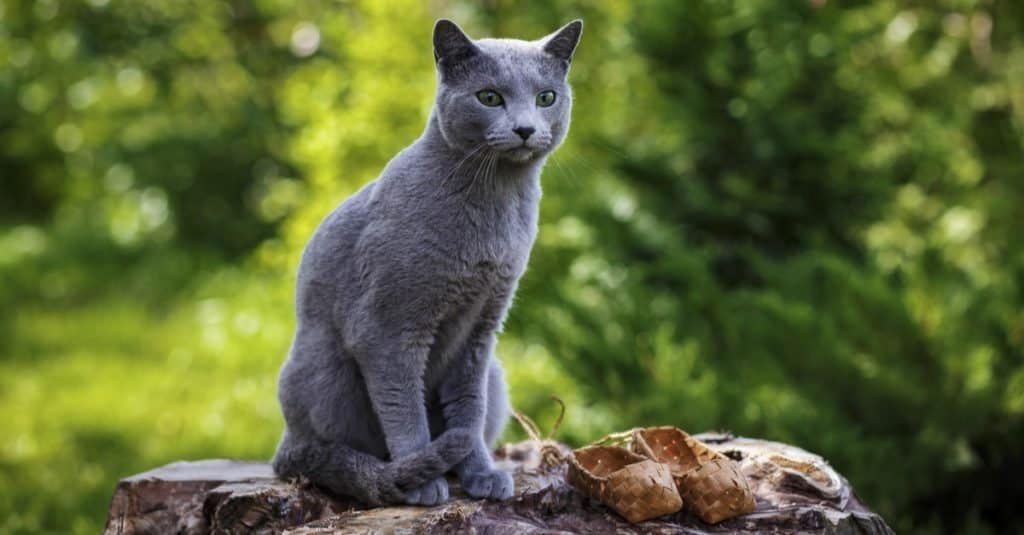
Review News/Shutterstock.com
Russian Blue Size And Weight
Thanks to their thick fur, Russian Blues appear larger and beefier than they actually are. They are actually a svelte, medium-size animal with males weighing in around 10-12 pounds and the females at 7-10 pounds.
Russian Blue Price
A Russian Blue can be had as a rescue cat for a very affordable price but the rarity of the breed can reduce the number of them found available for adoption. With regard to the price of a purebred kitten, the neutered pet price can start around $400, while the price of a pedigreed kitten can start at around $800. The most notable feature of an exceptional adult cat of this breed is the incredibly green color of its eyes, which is more of a shamrock green than a cat’s eye green. For those kittens likely to produce this particular trait, the price can go up to $2500 and beyond.
Russian Blue Kittens
Russian Blue kittens exhibit several distinctive features that set them off from both their parents and other breeds as well. Adult Russian Blues are a short-haired breed that has no striping of any sort on it. Yet their kittens may sometimes have some dark striping on their coats which fades away as they age.
The kitten has very distinctive yellow eyes, which is an easy way to distinguish this breed from other similarly-colored cats. As they grow older, they acquire a green rim around the yellow center. This eventually bleeds over until the entire eye is green.
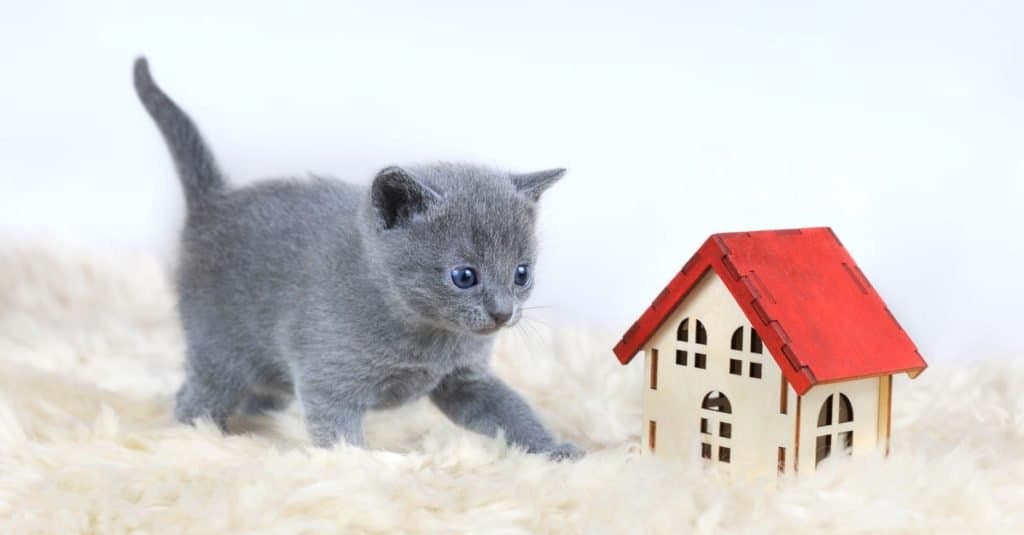
Mzorin/Shutterstock.com
Russian Blue Lifespan
Due to their very cautious nature and their excellent health, this is an extremely long-lived cat. The normal longevity range is up in the 15-20 year range. Even 25 years is not particularly uncommon for a well-cared-for member of the breed.
Russian Blue Cat’s Coat
The Russian Blue is a cat with a solid color coat. This ranges anywhere from a darker grey to a more desirable light grey or silver color.
Although a short-haired breed, the coat of a Russian Blue is of exceptionally fine quality and thickness. It is a hallmark of the breed that one can trace patterns in their fur which will remain until taken away by grooming it back out again.
There are no other colors than grey or silver for the cat. It may show some tabby-style ghost markings as a kitten but these will fade away in adulthood, leaving a coat with no stripes visible at all.
View all 74 animals that start with R
Russian Blue FAQs (Frequently Asked Questions)
Are Russian Blues herbivores, carnivores, or omnivores?
Russian Blues are omnivores, meaning they eat both plants and other animals.
What Kingdom do Russian Blues belong to?
Russian Blues belong to the Kingdom Animalia.
What class do Russian Blues belong to?
Russian Blues belong to the class Mammalia.
What phylum to Russian Blues belong to?
Russian Blues belong to the phylum Chordata.
What family do Russian Blues belong to?
Russian Blues belong to the family Felidae.
What order do Russian Blues belong to?
Russian Blues belong to the order Carnivora.
What genus do Russian Blues belong to?
Russian Blues belong to the genus Felis.
What type of covering do Russian Blues have?
Russian Blues are covered in hair.
How many babies do Russian Blues have?
The average number of babies a Russian Blue has is 6.
What is an interesting fact about Russian Blues?
Russian Blues were first brought to the UK in the 1800s!
What is the scientific name for the Russian Blue?
The scientific name for the Russian Blue is Felis catus.
What is a Russian Blue cat?
A Russian Blue cat is a breed of feline that was originally found in the far north of Russia on the shores of the White Sea. Although sometimes alleged to be descended from royal cats of the Czar’s household, this is probably not correct insofar as the specimens which were taken back to Britain starting in the 1860s were concerned. Members of this wild northern species might have found their way down into the Romanov palaces, but the ones extant in the western world did not come from that lineage.
The cat is known for its fastidiousness, good grooming habits, ability to interact favorably with humans, a distinct aversion to strangers or sudden noises, a willingness to talk and play fetch, and also a definite proclivity to select one single human as its special life companion.
They are long-lived, healthy, easy to care for, have a luxurious grey or silver coat, and stunningly brilliant green eyes in the most expensive and carefully bred members of the clan. They can be left alone for long periods of time but also like to cuddle up to humans when they are around.
How long does a Russian Blue cat live?
The Russian Blue is a long-lived cat. It can easily live for 15-20 years and has been known to last for 25 years.
How much does a Russian Blue cat cost?
As with all pedigreed types, there is a mix of pricing structures for the Russian Blue. For a pet-quality kitten, this can be anywhere from $400 on up to about $600. These kittens are sold only in a neutered condition. For those who desire a fully functional kitten, the price rises sharply. Average quality breeding kittens can be found in the $800-1200 range, while exceptional specimens from exclusive breeders can go as high as $2500-3000.
Because the breed is little known and easily confused with other types of blue cats of more common ancestry, it is possible to find one up for adoption as a rescue animal. These rescue cats can often be obtained for the ordinary adoption price in the $100-200 range.
Are Russian Blue cats cuddly?
They have a very affectionate personality, but they are frequently noted for playing favorites with their humans. This is to say that they might prefer the company of one person to a marked degree over everyone else. This can be either a blessing or a bone of contention. For the one who is chosen for their special affection, it is of course a joy. For those who were not selected, it can create some small degree of jealousy.
Why are Russian Blues so expensive?
Russian Blues are expensive because they have a very long list of features, a very short list of drawbacks, and have not been subject to the same sort of rigorous assembly-line breeding that has occurred with many other breeds of cats. In a single word, they are rare.
Do Russian Blue cats have health issues?
Overall, they are one of the healthiest breeds of cats. Individuals can, of course, not live up to this reputation. Although not fully hypoallergenic, they shed very little and are recognized as being one of the cat breeds with the least amount of Fel d 1, a glycoprotein that can trigger cat allergies.
Are there any specific issues involved with caring for a Russian Blue?
They are most insistent upon a very clean cat box or else they will do their business elsewhere. Because of the high quality of their fur, grooming a Russian Blue is not required quite as often as with other cat breeds. They have healthy appetites so their food must be controlled to avoid obesity. They also are definite creatures of habit when it comes time for dinner or any other routine function of life.
What are the differences between a Russian Blue and a Korat?
The greatest differences between a Korat and a Russian Blue cat include their head shape, fur type, and place of origin. The Korat has a heart-shaped head, originated in Thailand, and has a single coat of short, fine fur that is light blue at the root and darker as it grows before ending in a silvery tip. The Russian blue cat has a wedge-shaped head, originated in Russia, and has a double coat of fur with silvery guard hairs.
What are the differences between a British Shorthair and a Russian Blue?
The greatest differences between a British Shorthair and a Russian Blue cat include their head shape, morphology, and eye color. The British Shorthair is a compact-bodied cat with a round, wide head with large jowls and copper eyes. The Russian Blue cat has a slender body with a thin tail, a wedge-shaped head, and emerald green eyes.
What are the differences between a Russian Blue Cat and a Chartreux Cat?
The greatest differences between a Russian Blue Cat and a Chartreux Cat include their head shape, place of origin, and body morphology. The Russian Blue Cat is a feline from Russia that has a slender body and a long thin tail with a wedge-shaped face, but the Chartreux Cat is from France, has a muscular and broad body with thin legs, and possesses a rounded head with a muzzle that makes people believe the cats are smiling at times.
Sources
- Hill’s Pet, Available here: https://www.hillspet.com/cat-care/cat-breeds/russian-blue
- Pet MD, Available here: https://www.petmd.com/cat/breeds/c_ct_russian_blue
- All About Cats, Available here: https://allaboutcats.com/cat-breeds/russian-blue
- Petfinder, Available here: https://www.petfinder.com/cat-breeds/russian-blue/




